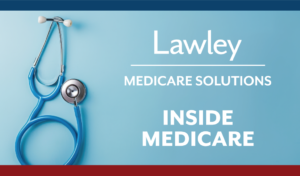Summary of Benefits and Coverage (SBC)
Summary of Benefits and Coverage (SBC)
May 2, 2013
The Affordable Care Act (ACA) requires health plans and health insurance issuers to provide a Summary of Benefits and Coverage (SBC) to applicants and enrollees. The SBC is intended to be a short, simple explanation about the health plan’s benefits and coverage that can help consumers more easily compare plan options.
On April 23, 2013, the Departments of Labor (DOL), Health and Human Services (HHS) and the Treasury (Departments) issued Frequently Asked Questions (FAQs Part XIV) on the SBC requirement for the second year of its applicability as well as an updated template.
The new FAQs address issues related to providing SBCs in the second year of applicability, including:
- Changes made to the templates for the SBC;
- Transition relief with respect to the minimum essential coverage and minimum value disclosure requirements;
- Extension of certain existing SBC safe harbors and other enforcement relief applicable for first year SBCs; and
- An “anti-duplication” rule for student health insurance coverage.
The updated SBC template includes new language regarding:
- Whether a plan or coverage provides minimum essential coverage (MEC); and
- Whether the plan’s or coverage’s share of the total allowed costs of benefits provided under the plan or coverage meets applicable minimum value (MV) requirements.
There are no changes to the uniform glossary. There are also no changes to the Instructions for Completing the SBC (for either group or individual health coverage), “Why This Matters” language for the SBC, or to the coverage examples.
*The updated template is for coverage beginning on or after January 1, 2014 and before January 1, 2015.
PROVIDING THE SBC
-Year One of Applicability Effective Dates
Plans and issuers must provide the SBC to participants and beneficiaries who enroll or re-enroll during an open enrollment period beginning with the first day of the first open enrollment period that begins on or after Sept. 23, 2012.
For participants who enroll in coverage other than through an open enrollment period (for example, newly eligible individuals and special enrollees), plans and issuers must provide the SBC beginning on the first day of the first plan year that begins on or after Sept. 23, 2012.
-Timing Requirements
For group health plans, the final regulations outline two different scenarios under which the SBC must be provided: (1) by a group health insurance issuer to a group health plan; and (2) by the issuer or plan to participants and
beneficiaries.
(1) A health insurance issuer must provide an SBC to a group health plan (or the plan’s sponsor):
- Upon application for health coverage;
- By the first day of coverage, if there was any change in the information required to be in the SBC that was
- provided upon application and before the first day of coverage;
- When the issuer renews or reissues the policy; and
- Upon request.
(2) A health insurance issuer or health plan must provide an SBC to participants and beneficiaries with respect to each benefit package for which the participant or beneficiary is eligible. The SBC must be provided:
- As part of any written application materials that are distributed by the plan or issuer for enrollment;
- If the plan or issuer does not distribute written application materials for enrollment, no later than the first date that the participant is eligible to enroll in coverage;
- By the first day of coverage, if there was any change to the information required to be in the SBC that was provided upon application and before the first day of coverage;
- To special enrollees, no later than the deadline for providing the summary plan description (SPD) (that is, within 90 days of enrollment);
- Upon renewal, if participants and beneficiaries must renew in order to maintain coverage; and
- Upon request (the uniform glossary must also be provided upon request).
SBCs that are provided upon application (by issuers) or upon request (by either plans or issuers) must be provided as soon as practicable, but no later than seven days after receipt of the application or request. For providing the SBC at renewal time, if a written application is required for renewal, the SBC must be provided no later than when the application materials are distributed. If renewal is automatic, the SBC must be provided no later than 30 days before the beginning of the new plan year. However, an exception applies if an insured plan’s policy, certificate or contract of insurance has not been issued or renewed before this 30-day period. In this case, the SBC must be provided as soon as practicable, but not later than seven days after the issuance of the new policy, certificate or contract of insurance, or the receipt of written confirmation of intent to renew, whichever is earlier.
-Special Rules to Avoid Duplication
The final regulations contain three special rules to streamline the provision of the SBC and avoid unnecessary duplication. First, if either the plan or issuer provides the SBC to a participant or beneficiary in accordance with the timing and
content requirements, both will have satisfied their SBC obligations. Thus, a fully-insured plan will satisfy the requirement to provide an SBC to an individual if the issuer provides a timely and complete SBC to the individual.
Second, a single SBC may be provided to a family, unless any beneficiaries are known to reside at a different address. Due to this rule, plans and issuers will be required to provide separate SBCs to beneficiaries only in limited
circumstances.
Third, for group health plans with multiple benefit packages, the plan or issuer is required to automatically provide a new SBC at renewal only with respect to the benefit package in which a participant or beneficiary is enrolled. SBCs for
other benefit package options do not have to be provided automatically at renewal, but must be provided upon request.
-Exceptions for Certain Types of Plans, Policies or Benefits
The SBC requirement applies to both group health plans and health insurance issuers. In the preamble to the final regulations, the Departments state that an SBC does not need to be provided for plans, policies or benefit packages that constitute “excepted benefits” under HIPAA. Thus, for example, the SBC requirement does not apply to standalone dental or vision plans or health flexible spending accounts (FSAs) that qualify as excepted benefits. If a health FSA does not meet the criteria for an excepted benefit, and it is integrated with other major medical coverage, the SBC should be prepared for the other major medical coverage and the effects of the health FSA can be included in the appropriate spaces on the SBC for deductibles, copayments, coinsurance and benefits otherwise not covered by the major medical coverage. A stand-alone FSA that is not an excepted benefit must satisfy the SBC requirements independently. A similar rule applies for health reimbursement arrangements (HRAs). Health savings accounts (HSAs) are not group health plans and, thus, are not subject to the SBC requirement. However, the SBC for a high deductible health plan (HDHP) associated with the HSA can mention the effects of employer contributions to HSAs in the appropriate spaces on the SBC for deductibles, copayments, coinsurance and benefits not otherwise covered by the HDHP.
-Effect on Other Documents
The SBC does not replace any required disclosure documents for group health plan coverage, such as the summary plan description (SPD). Rather, it adds to the list of required disclosures. However, the SBC can be provided as either
a stand-alone document, or it can be provided with other summary materials (for example, the SPD). To be provided with other summary materials, the SBC information must be intact and prominently displayed at the beginning of the materials (for example, immediately after the SPD’s table of contents) and provided in accordance with the SBC timing requirements.
-Method of Delivery
The SBC may be provided in either paper or electronic form (such as by e-mail or an Internet posting). However, the final regulations place restrictions on the electronic delivery of the SBC. For SBCs provided by an issuer to a health plan, the SBC may be provided electronically if:
- The format is readily accessible by the plan or its sponsor;
- The SBC is provided in paper form free of charge upon request; and
- If the electronic form is an Internet posting, the issuer timely advises the plan in paper form or e-mail that the documents are available on the Internet and provides the Internet address.
For SBCs provided to participants and beneficiaries, the SBC may be delivered electronically to participants and beneficiaries who are already covered under the group health plan if the Department of Labor’s (DOL) regulations on
electronic disclosure are satisfied. For participants and beneficiaries who are eligible but not enrolled for coverage, the SBC may be provided electronically if:
- The format is readily accessible;
- The SBC is provided in paper form free of charge upon request; and
- If the electronic form is an Internet posting, the plan or issuer timely notifies the individual in paper form (such as a postcard) or e-mail that the documents are available on the Internet, provides the Internet address and notifies the individual that the documents are available in paper form upon request.
UNIFORM GLOSSARY
Plans and issuers must also provide participants and beneficiaries a uniform glossary of health-coverage-related terms and medical terms upon request. The terms included in the uniform glossary are specified by the Departments and are intended to allow individuals and employers to compare and understand the terms of coverage and medical benefits, including any exceptions to those benefits. The uniform glossary must be provided in the format specified by the Departments. It must be presented in a uniform format and use terminology understandable by the average plan enrollee. Plans and issuers must make the uniform glossary available upon request, within seven business days after receipt of the request. The uniform glossary may be provided in either paper or electronic form, as requested.
MODIFICATIONS
Plans and issuers are required to give at least 60 days advance notice of any material modification in plan terms or coverage that are not reflected in the most recent SBC. This notice requirement is limited to material modifications
that do not occur in connection with a renewal or reissuance of coverage. According to the regulations, a “material modification” includes: (1) an enhancement of covered benefits or services, such as coverage of previously excluded benefits or reduced cost-sharing; (2) a material reduction in covered services or benefits, such as through increased premiums or cost-sharing; or (3) more stringent requirements for receipt of
benefits, such as a new referral requirement. The material modification notice can be provided in a separate document describing the material modification or through an updated SBC.
MORE INFORMATION
More information on the SBC, including the updated template (with instructions, sample language and a guide for coverage examples calculations) and the uniform glossary, is available at:
http://cciio.cms.gov/resources/other/index.html#sbcug or http://www.dol.gov/ebsa/healthreform/
USE THIS LINK TO DOWNLOAD THE PDF OF THIS BRIEF:
Summary of Benefits and Coverage (SBC)_0






